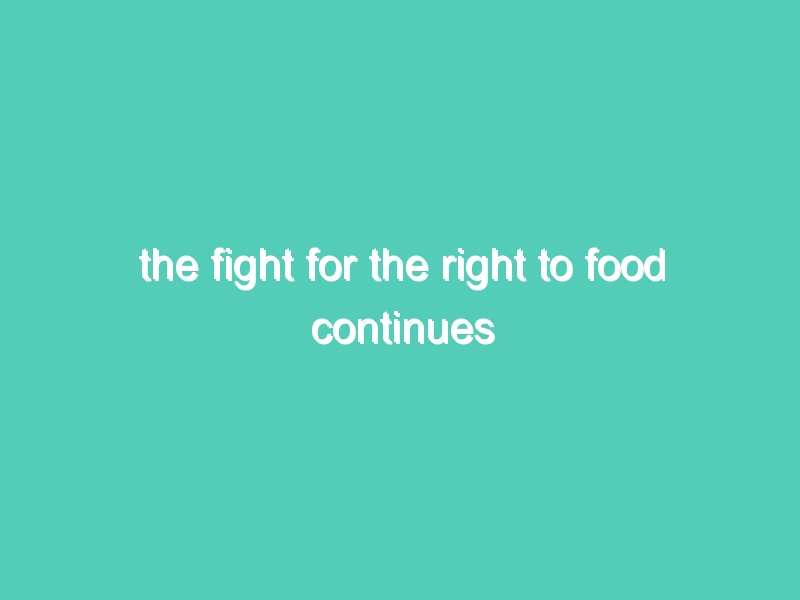According to figures from the FAO, there are almost 870 million chronically undernourished people in the world today, primarily in developing countries. Every year, 6 million children die, directly or indirectly, from the consequences of undernourishment and malnutrition – that is, 1 child every 5 seconds.
States undertook two quantifiable commitments to reduce undernourishment in the world in the last 20 years. In the 1996 Rome Declaration on World Food Security and the Plan of Action of the World Food Summit, they pledged to halve the number of undernourished people by 2015. Four years later, in the United Nations Millennium Declaration, they undertook to halve the proportion of undernourished people by 2015.
Before the start of the global food crisis in 2008, experts already recognized that these goals would be difficult to achieve. While the number and proportion of undernourished people decreased since the early 1990s, most of the progress was achieved before the 2007-2008 skyrocketing of food prices. A new food crisis ravaged the Horn of Africa in 2011.
Recognizing the failure and continuing challenge, states and the FAO, spurred by civil society organizations, sought to reverse the trend registered since 1996. To this end, they decided to effect a paradigm shift from an anti-hunger approach based on food security to one based on the right to adequate food. This decision was taken at the 2002 WFS, when the 179 participating states reaffirmed the right to adequate food and tasked an FAO intergovernmental working group with developing Right to Food Guidelines in order to provide practical guidance for achieving the goals established in 1996.
The Right to Food Guidelines were adopted unanimously by the FAO Council in November 2004. Since then, they have been used widely in the fight against hunger – for example in Brazil and many other countries) and in response to the global food crisis. In January 2009, the UN Secretary General stated that the right to food should be added as a third track – with food aid and food security – to respond to the global food crisis and food insecurity. In November 2009, in the Declaration of the World Food Summit on Food Security, states reiterated their commitment to “collectively accelerate steps… to set the world on a path to achieving the progressive realization of the right to adequate food in the contact of national food security”.
In parallel to this development and in response to the global food crisis that erupted in 2008, states and international organizations created two new institutional frameworks to coordinate their activities.
The United Nations system created the High Level Task Force on Global Food Security (HLTF) in 2008, with the mandate to coordinate the responses of international organizations. The HLTF developed a Comprehensive Framework for Action (CFA) to propose measures to be implemented to respond to the food crisis and propose long term solutions. The CFA was revised in 2010, to adjust to the evolving situation, and became the Updated CFA (UCFA).
In November 2009, at the World Food Summit on Food Security, Member States of FAO agreed upon a far-reaching reform of the Committee on World Food Security (CFS), with became a key platform for coordination and exchange of best practices, as well as a forum to promote accountability. Since then, the CFS developed a Global Strategic Framework for Food Security and Nutrition (GSF), a global framework and living document designed to support this process.
– Christophe Golay and Michaela Büschi, The Right to Food and Global Strategic Frameworks: The Global Strategic Framework for Food Security and Nutrition (GSF) and the UN Comprehensive Framework for Action (CFA), Rome, FAO, 2012, pp. 8-9
The two global frameworks adopted in response to the 2008 food crisis recognize the importance of the right to food and aim to provide practical guidance and support for the fight against hunger at all levels. The fight for the right to food continues.



